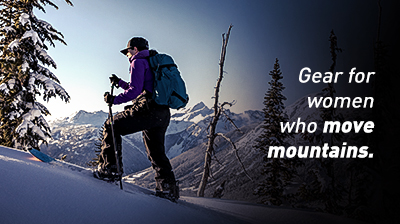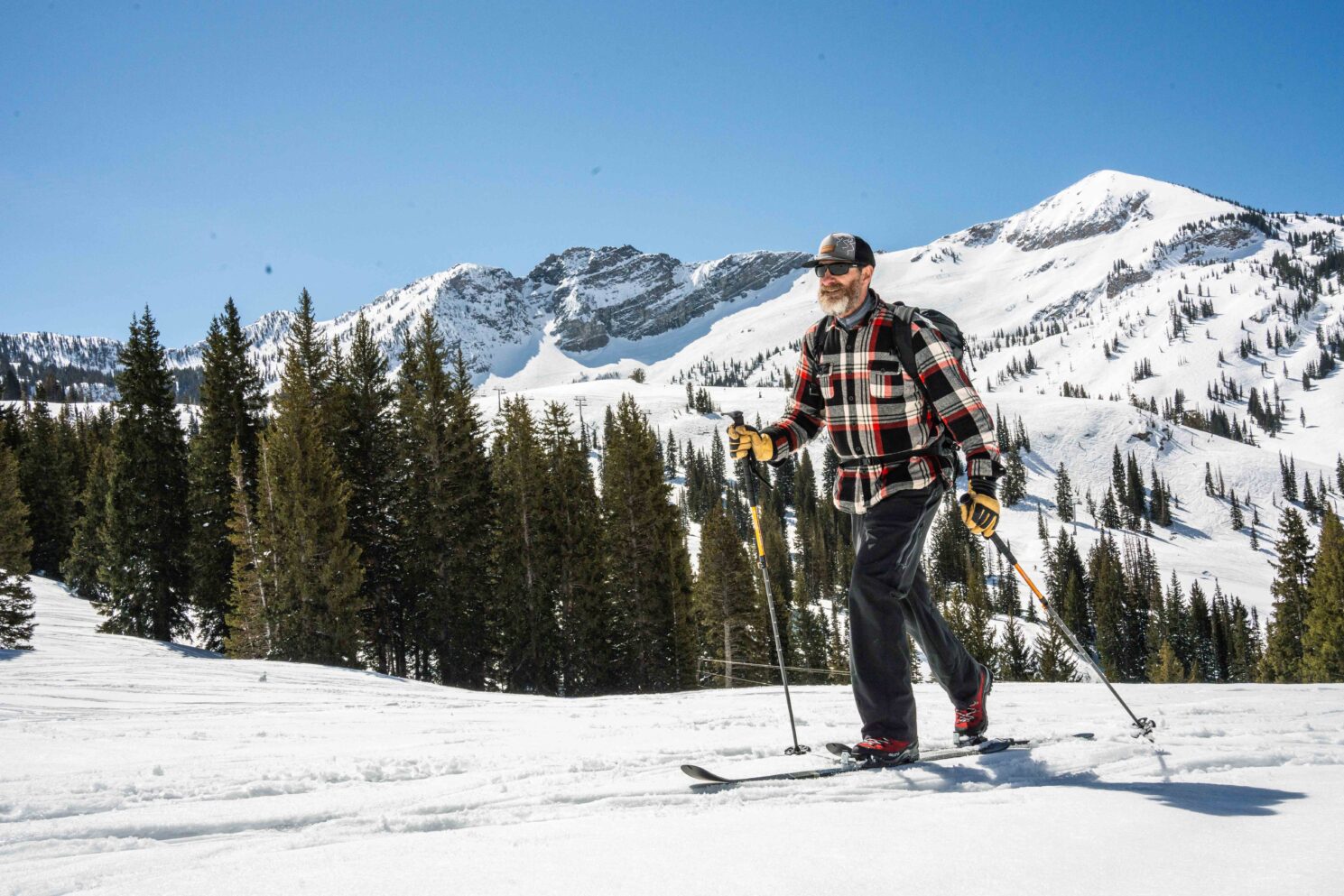
Why Every Backcountry Skier Needs to try XCD Skiing
Share this Post
Cross-country downhill (XCD) skiing might sound like a throwback—something your uncle’s leather boots and a dusty pair of fish scales would be better suited for than a modern backcountry kit. But here’s the truth: XCD skiing is having a quiet resurgence, and it’s worth paying attention to.
Why XCD Skiing is Back On The Rise
While tech bindings, climbing skins, and downhill-oriented setups dominate most conversations about ski touring, XCD has been carving out a space of its own. Lightweight, versatile, and surprisingly fun, these scaled skis open up terrain in a way that feels refreshing against the grind of long approaches and packed trailheads.
So why now? Maybe it’s the lingering impact of the pandemic that pushed more people to explore close-to-home adventures. Maybe it’s the economy steering folks toward gear that covers more ground for less money. Or maybe people are just realizing that backcountry skiing doesn’t have to mean going into big terrain every day. Whatever the reason, XCD skiing is back—and it deserves a spot in your quiver, whether you’re a skier, a splitboarder, or simply someone looking for a new way to move through winter.
Let’s break down exactly why XCD belongs in your kit: from the versatility of scaled bases to the wide range of terrain and activities these skis unlock.
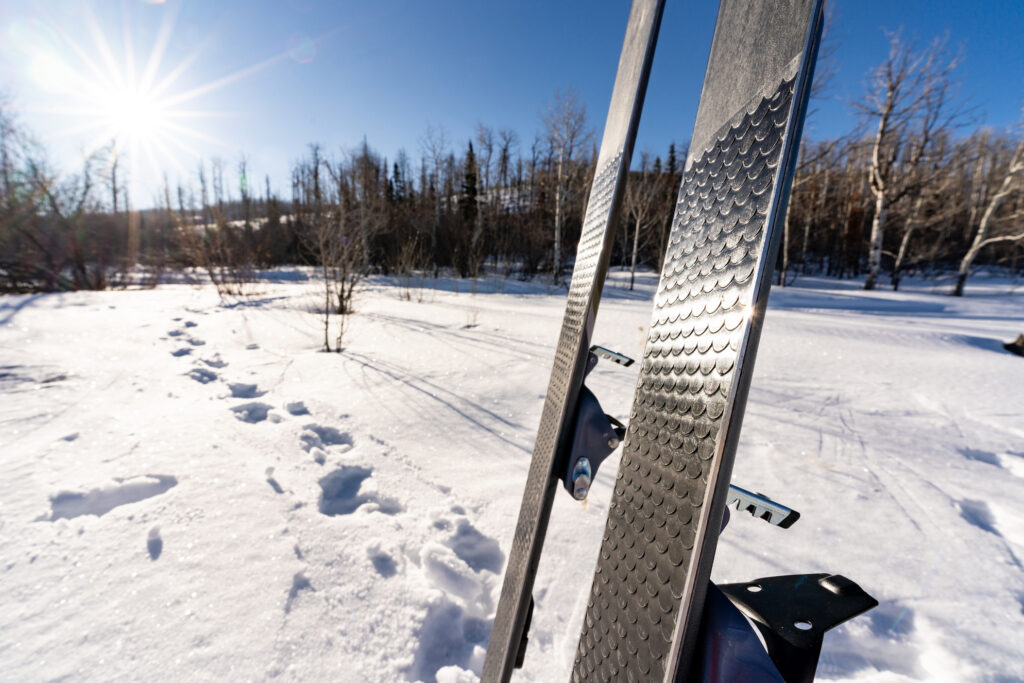

Why Go XCD?
Fitness and Training Days
XCD skis are perfect for when you just want to move. Scaled bases make it easy to head out the door and start gliding—no skins, no transitions, no fuss. Whether it’s a quick lap on a forest road or a loop behind the house, these setups deliver a real aerobic workout and a simple way to keep your legs tuned all winter. Plus, you might be able to sneak some turns in while you’re at it!
Exploration and Adventure
Think of XCD as the ultimate tool for wandering. Rolling terrain, meadows, forest service roads—this is their wheelhouse. They cover ground quickly, encourage you to explore new corners of your range, and turn even a casual outing into a small adventure. Multi-day excursion? Exploring the National Forest? XCD skis have you covered.
The Perfect Early Season Ski
Before the snowpack fills in, XCD skis thrive. They handle mixed conditions, cover ground quickly, and make chasing those first flakes less of a chore and more of a reward. Early-season missions don’t have to wait for midwinter gear. An XCD setup allows you to get nice and warmed up on low-angle terrain while focusing on the fundamentals of your touring and turning technique.
A Safe Choice on High Avalanche Danger Days
Not every day is meant for steep lines. On stormy cycles or when persistent weak layers keep you grounded, XCD skis are the ticket to mellow terrain. You’ll still get the joy of gliding across fresh snow, without putting yourself in unnecessary danger.
Honing Your Telemark Technique
Light, flexible, and unforgiving in all the right ways, XCD gear forces you to ski with finesse. It’s a playful way to sharpen your telemark turns, dial in balance, and build skills that translate directly to bigger skis and bigger terrain. If you’re coming from an AT or splitboarding background, XCD skis provide a fun challenge for days when you’re looking for something new.
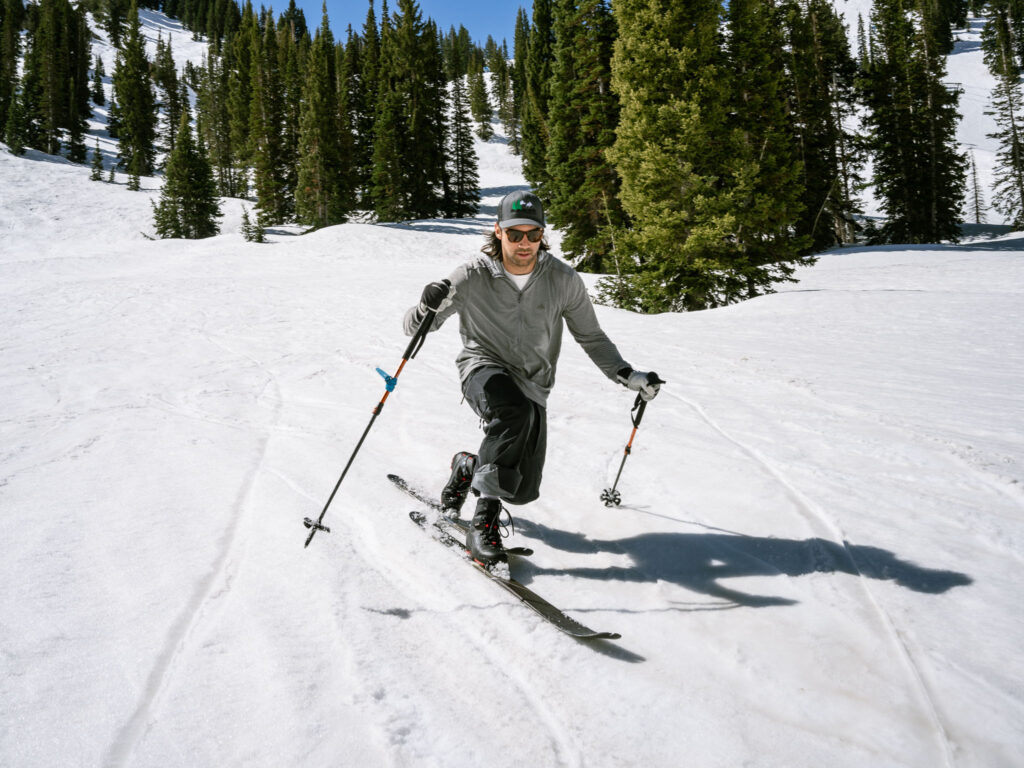

Accessibility: Affordable, Comfortable, and Durable
Compared to full AT or split setups, XCD gear comes with a friendlier price tag. Leather boots and simple bindings mean comfort right out of the box, and the durability is time-tested—many 3-Pin bindings have lasted decades. It’s approachable gear that just works.
Building Your XCD Setup: Skis, Bindings, and Boots
So you’re convinced XCD deserves a place in your quiver—now what? The good news is that building an XCD setup is straightforward. Here’s a quick breakdown of the gear you’ll need.
XCD Skis
The Voile Endeavor BC is a prime example of what makes XCD so fun. Lightweight, durable, and built with a scaled base, it thrives on rolling terrain but has enough backbone to handle turns when the slope tips down. Think of it as the sweet spot between cross-country efficiency and downhill control. Coming in at 86 – 86mm underfoot, you have enough float in the powder but can still kick and glide efficiently. You could always size up to the UltraVector BC if you want to focus primarily on the descent.
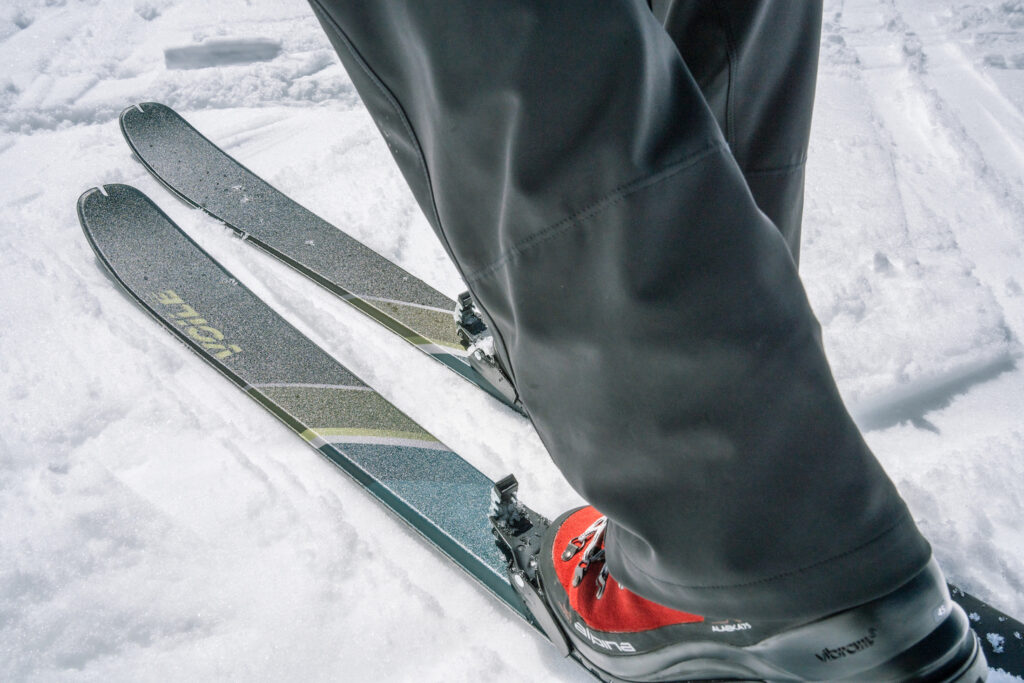
Bindings
XCD setups typically feature two main binding styles:
- 3-Pin: Simple, time-tested, and nearly indestructible. They pair well with traditional leather boots and are still a favorite for their durability and no-frills function. Add a cable to the equation, and you can make these very downhill capable.
- Xplore: A newer platform designed to kick and glide more efficiently. It requires XP boots that have pins on the side that click you into the binding. If you’re looking to save weight, Xplore is the way to go. Bumper options allow you to customize the stiffness for descending.
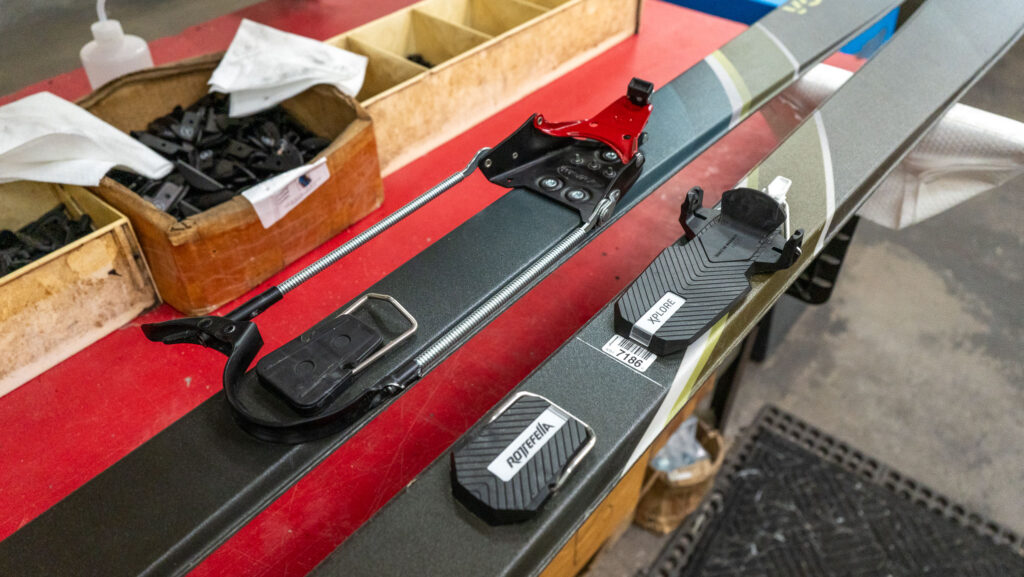
Boots
Boot choice comes down to which binding system you choose to roll with. Lucky for you, we offer boots for both systems here at Voile! We carry 4 different 3-Pin boots and 4 different XP boots. That way, you can really dial in your setup to your specific application. Just make sure you match the correct boot to your binding system. For a deep dive on our XP boot offerings, check out our full comparison here.
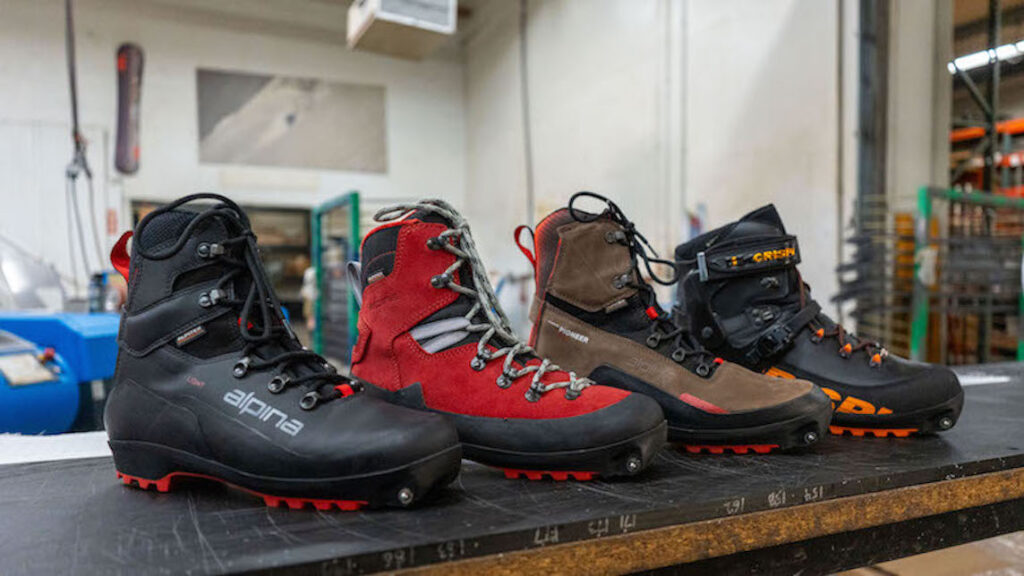
Why You Should Try XCD Skiing
An XCD setup isn’t here to replace your touring gear, splitboard, or resort skis—it’s here to expand your options. These skis fill the gaps: the short training laps, the low-angle adventures, the high-danger days, and the early-season missions when conditions are thin. They make it possible to move through winter in more ways, with less gear and more freedom.
At the end of the day, that’s what makes XCD skiing special: it brings back the simple joy of gliding across snow without overcomplicating things. Whether you’re exploring, training, or just stepping out for a quick fix of winter, XCD is proof that fun in the backcountry doesn’t always have to mean going big.
If you’re located near Salt Lake City, UT, you can always book a demo and try out one of these setups before committing. To book a demo, click here.
Share this Post



